The Shedd Aquarium, I’ve read, houses 32,000 animals — 1500 species including fish, marine mammals, birds, snakes, amphibians, and insects — and contains 5 million gallons of water. A “water zoo,” as Ann put it as we waited to get in last Friday. A lot of people were waiting to get in. A lot of people were already in.
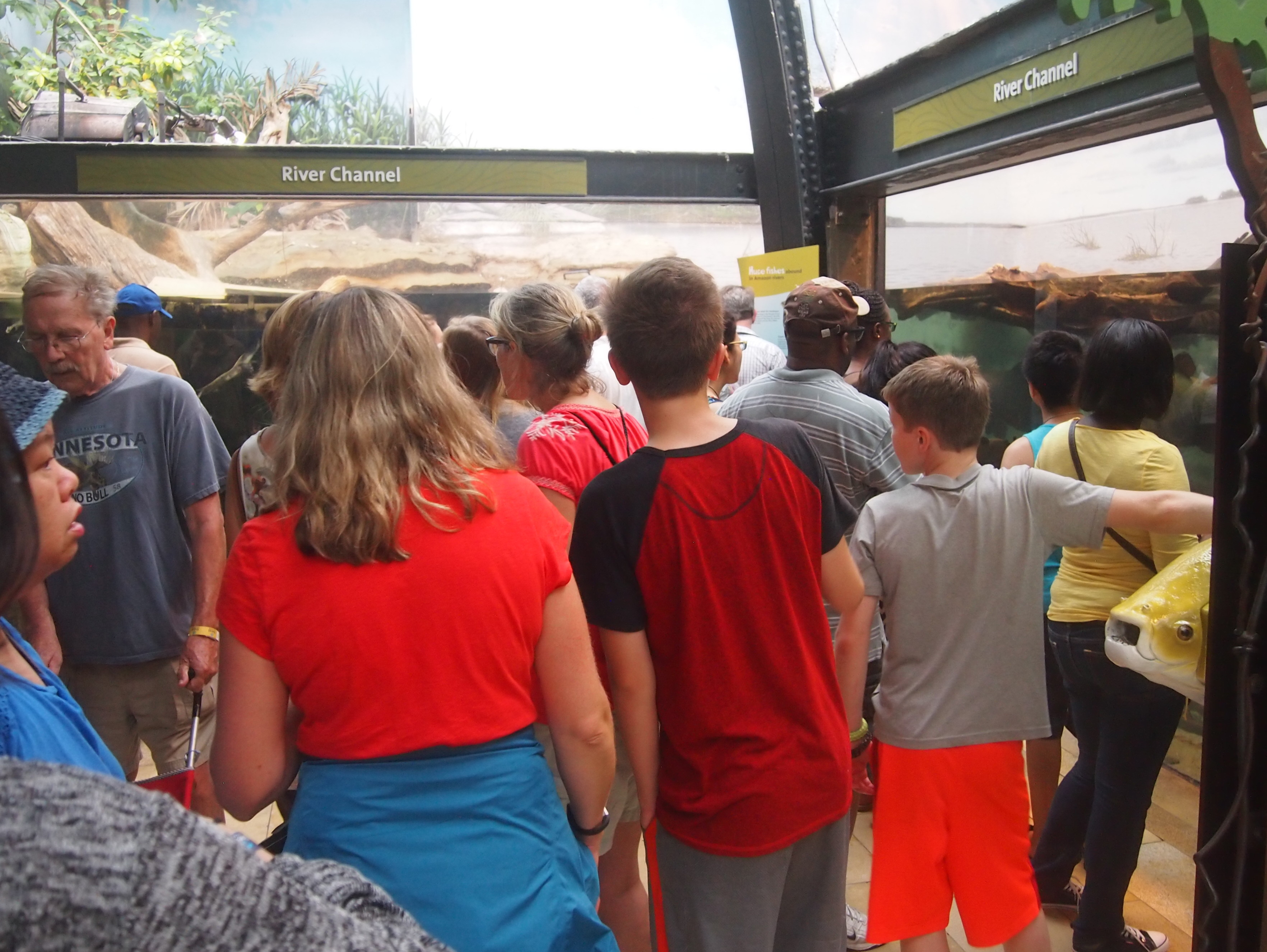 That made the exhibits a little difficult to see sometimes. On the other hand, sometimes spectators added charm to the scene.
That made the exhibits a little difficult to see sometimes. On the other hand, sometimes spectators added charm to the scene.
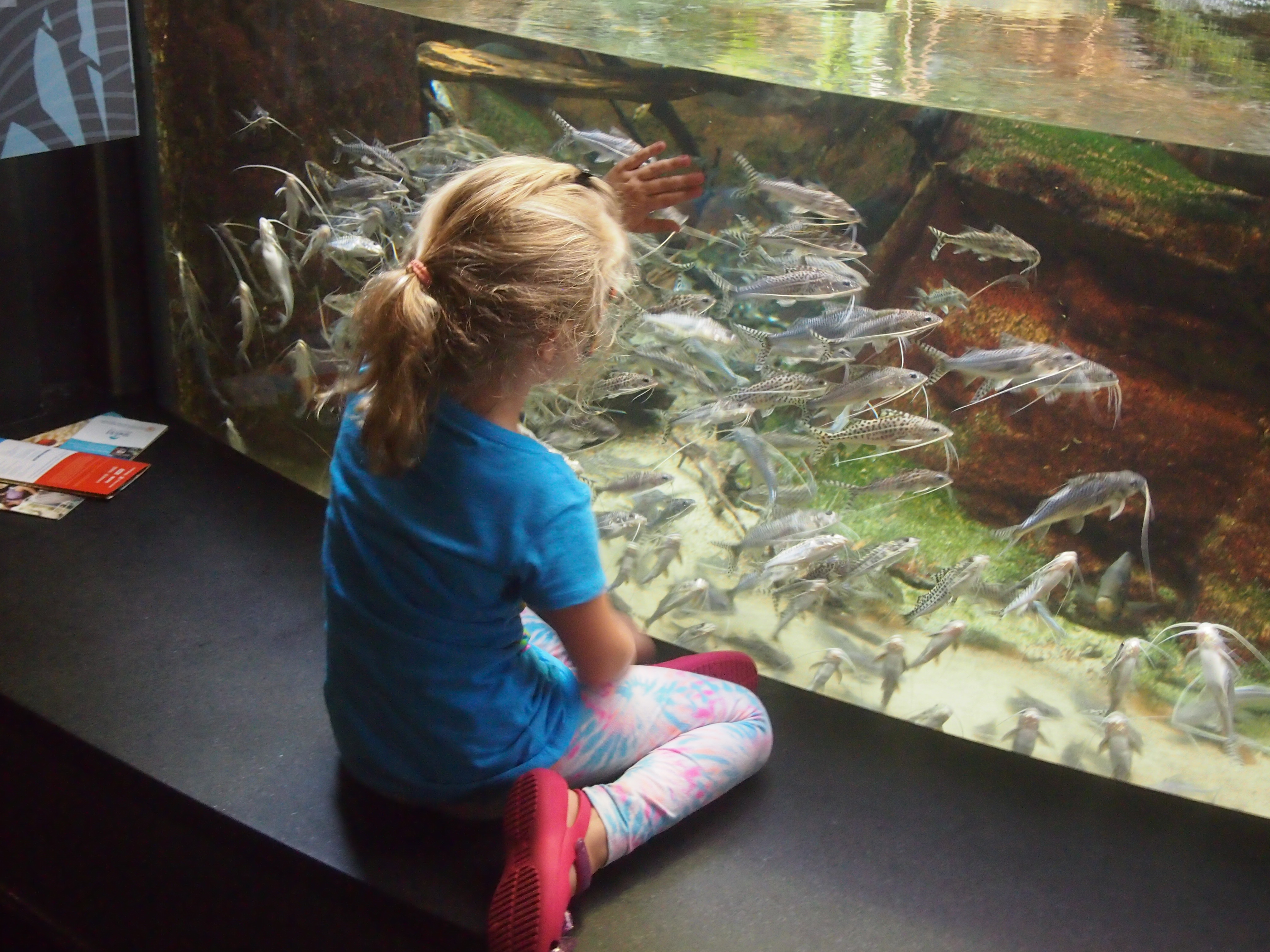 If you were patient enough, you could eventually see the tanks and tanks full of fish and other sea- and riverlife, small —
If you were patient enough, you could eventually see the tanks and tanks full of fish and other sea- and riverlife, small —
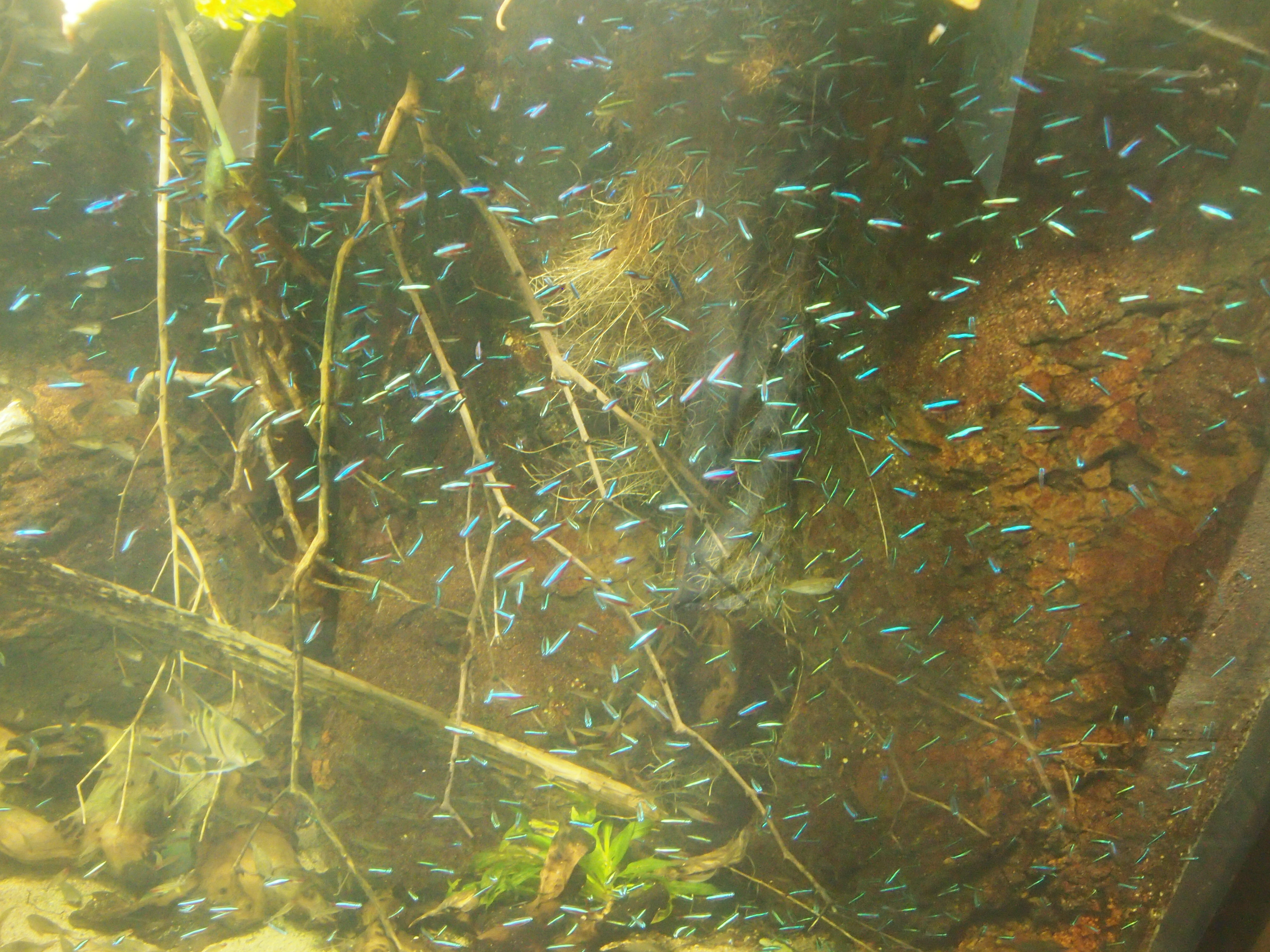 — and larger —
— and larger —
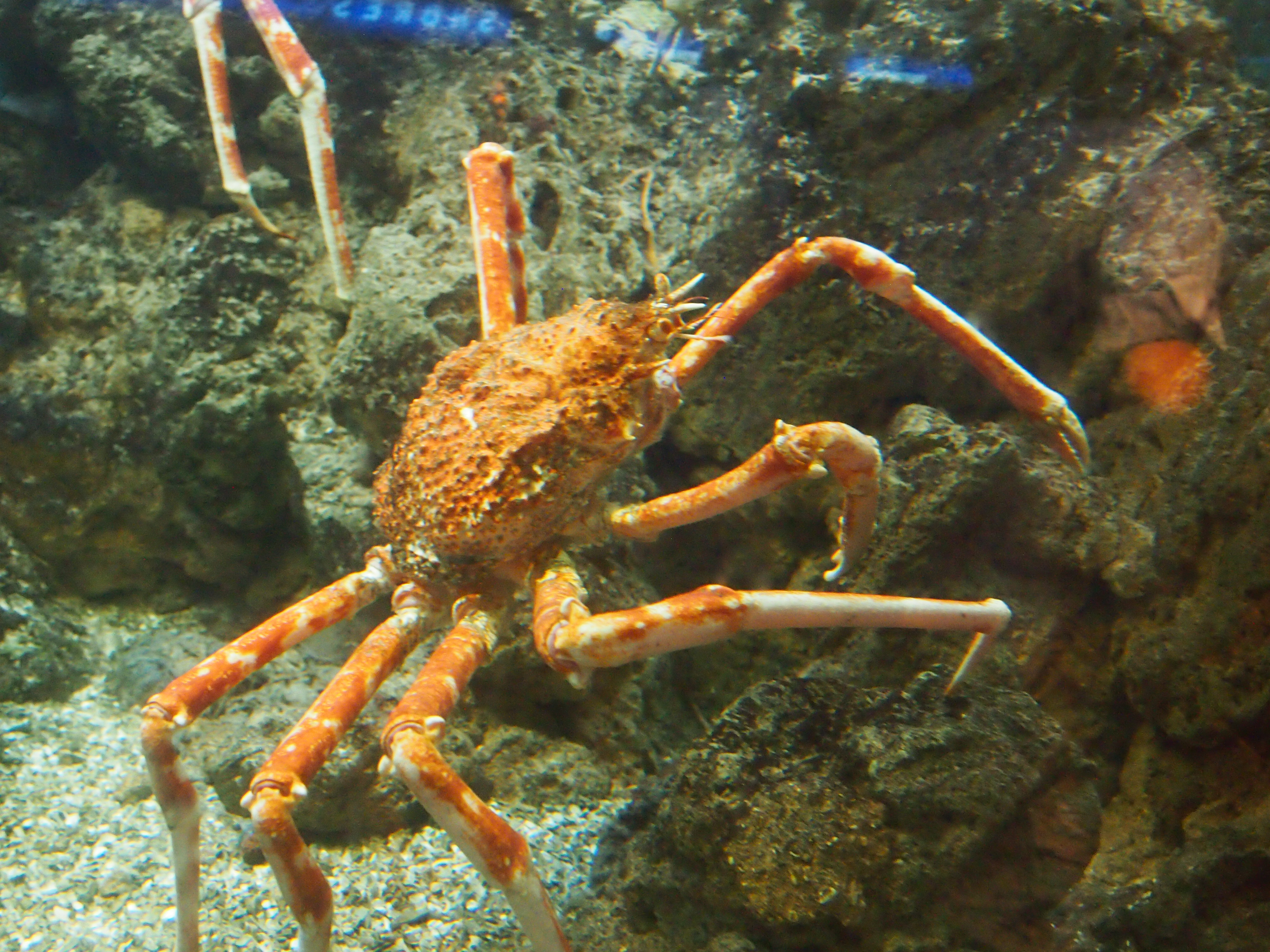 And some colorful static sealife scenes.
And some colorful static sealife scenes.
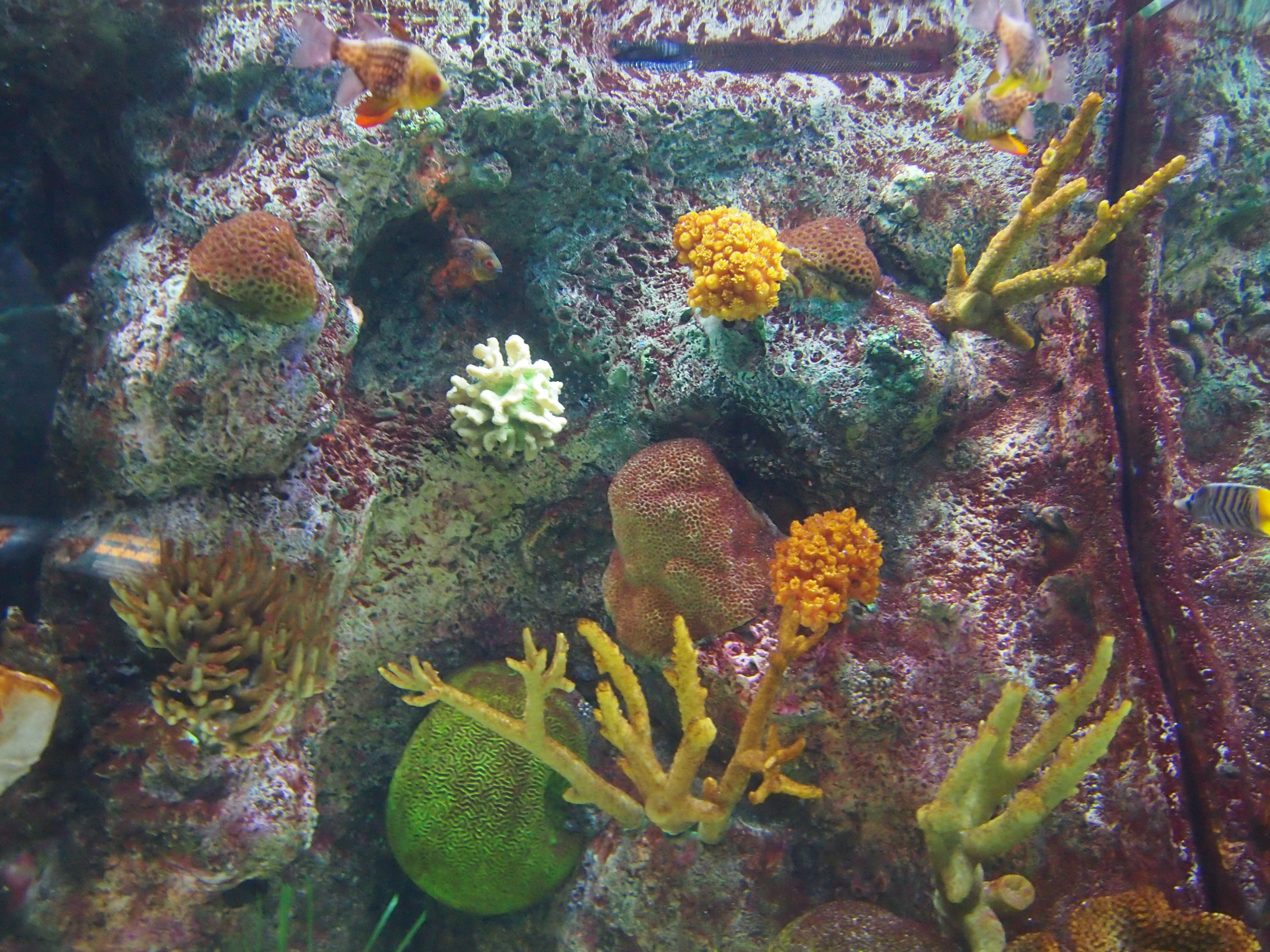
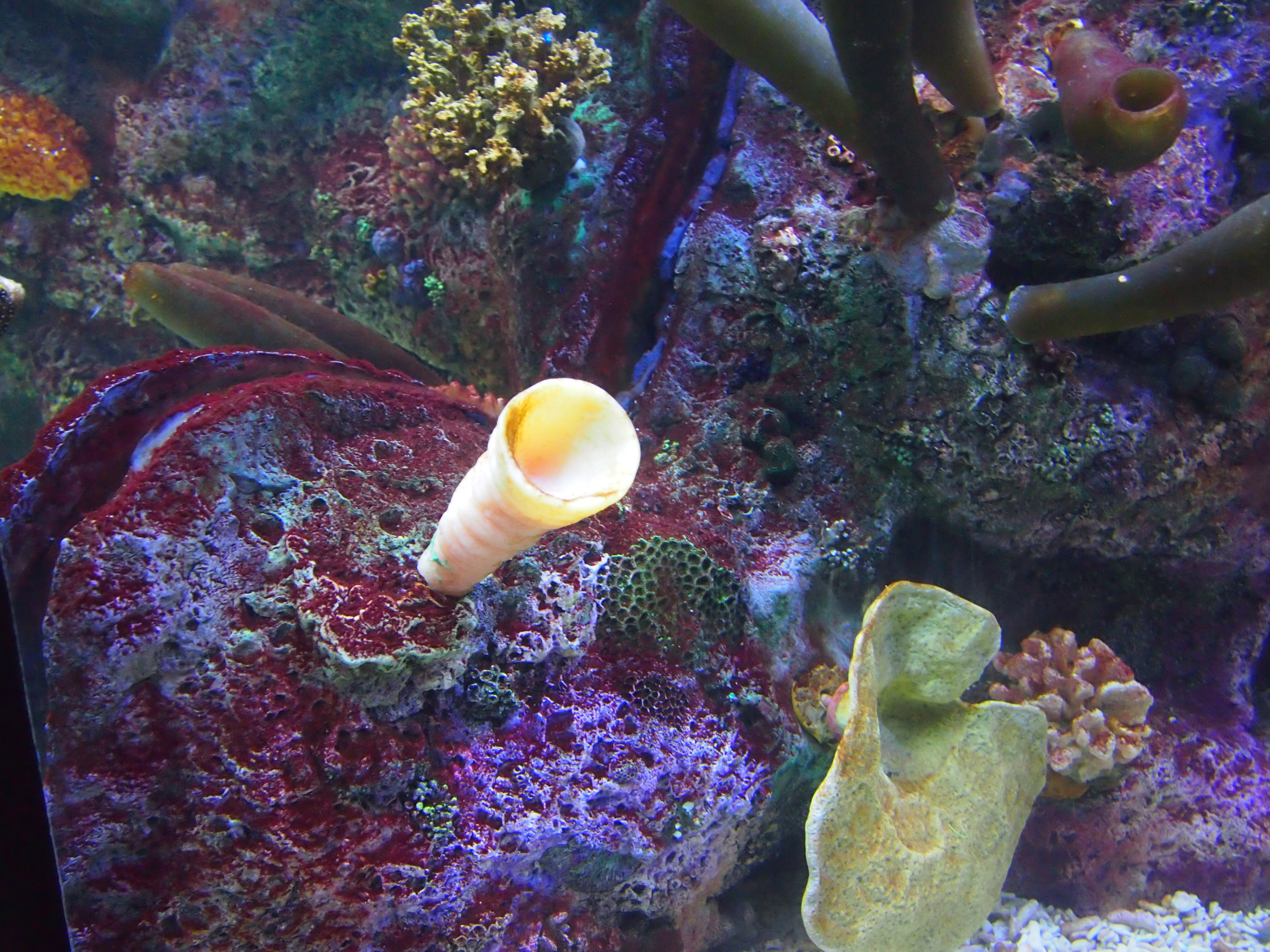 On the whole, the glass tanks and lighting and crowds made it hard to take pictures, but that’s just as well. The first thing to do somewhere interesting is to see it with your own eyes.
On the whole, the glass tanks and lighting and crowds made it hard to take pictures, but that’s just as well. The first thing to do somewhere interesting is to see it with your own eyes.
Saw lots of interesting creatures. That accounts for the Shedd’s popularity. It’s a water zoo of strange and sometimes bizarre things, even in our jaded age.
Sometimes the creatures were easy to identify, such as the octopi and the piranhas and the blue lobster — intense Prussian blue, as the Shedd notes. “The brilliant blue color is the result of a genetic mutation that causes the lobster to produce an overabundance of a large, complex protein called crustacyanin (‘cyan’ derives from the Greek word for dark blue) that binds the protein for the normal brownish coloration, canceling it out. Even the lobster’s antennae are blue.”
Another star attraction is Granddad, an Australian lungfish that’s been living at the Shedd since 1933. “Weighing in at 20 pounds and measuring four feet long, Granddad is believed to be the oldest fish in captivity at any public aquarium or zoo in the world,” asserts Chicago Tonight. He’s not much to look at, though (and I think his previous name, Methuselah, was better).
Speaking of the piranhas, we got a good look at them. According to a sign next to their tank, “their teeth are razor-sharp. Even so, piranhas usually just nip the tail and scales of other fishes to fill up on protein. Piranhas don’t hunt for people, cattle or other mammals. Many don’t even eat whole fish.”
What? I refuse to believe it. I saw the Saturday afternoon movies. I know that when luckless explorers in the Amazon basin put as much as a toe in the water, piranhas attack instantly and en masse.
Sometimes the creatures weren’t so easy to identify. The Shedd helpfully includes a digital kiosk next to most of the tanks, and you can scroll through pictures with common and scientific names to ID them. Trouble was, I’d look at some odd thing in the tank, and then scroll through looking for some picture like it, and find nothing. That happened more than once. Ah, well.
The crowds were a little tiring, but we enjoyed the place enough to stay most of the afternoon, to near closing. Part of the time we were in the Shedd’s new — new to us, since we hadn’t seen it, but it was completed in 1991 — Oceanarium. More about which tomorrow.